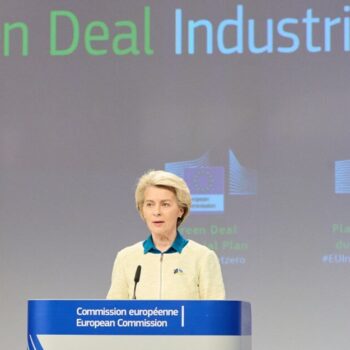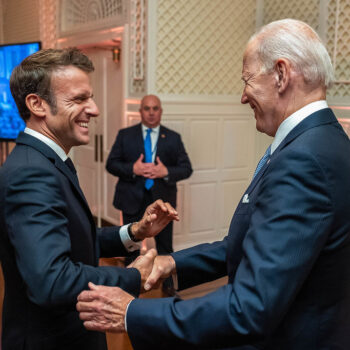Industrialised countries need to agree real low carbon technology transfer at Copenhagen or face a damaging backlash.
Leaders from industrialised countries need to rethink their assumptions on low carbon technology transfer ahead of the Copenhagen Climate Summit next week.
Though divided on many other issues, the US, Japan and EU seem to have taken a common view that a weak outcome on technology transfer will ultimately benefit them by maintaining their companies’ current lead in low carbon innovation.
This assumption has led to brittle proposals and a point blank refusal to discuss any intellectual property rights issues; bolstered by heavy lobbying from domestic industries. However, this approach is bad for the climate, threatens the negotiations and could backfire economically.
A bad technology deal in Copenhagen is likely to trigger an aggressive response by large developing countries, such as China and India, to accelerate their often state-backed purchases of Western technology firms and relocate their functions and intellectual capital overseas. Developed countries should understand this threat and offer ambitious technology proposals in return for equally ambitious actions by developing countries to cut their emissions. This will expand the global market for climate technologies in all countries, strengthen global innovation systems and allow for win-win opportunities from which everyone can profit.
Winners and Losers
Hidden behind the current technology negotiations on institutions, finance and intellectual property rights is an underlying subtext of national competitiveness. Which countries will control critical climate technologies? Who will benefit most from the jobs and growth that the green-tech revolution will bring? So far the industrialised world has approached the negotiations with a clear assumption that a soft agreement on technology will ensure that their economies will profit most. The global companies headquartered in rich countries dominate the field for low carbon innovations, owning over 70% of key climate patents. Therefore, the conventional wisdom runs, provided they don’t ‘give away’ too much of the lead this will continue to be the case in the future.
To achieve this goal, the industrialised countries have tried to manage expectations down for substantive technology provisions and maintain a narrow focus on capacity building, market openness and trade barrier removal. The US and EU have so far refused to engage at all on intellectual property issues, leading to a highly polarised debate with potentially damaging consequences for the negotiations as a whole.
However, the economic assumptions which the industrialised countries have based their approach on are fundamentally flawed. It is companies, and not countries, that own the vast majority of climate technologies. Although they may currently be headquartered in the industrialised world they are highly skilled at shifting resources around the globe. While in the past this may have been to outsource low value added assembly and back-office functions, this is now covering high value research and development roles. General Electric has established R&D centres located in both China and India and recently announced a joint venture with Shenhua in China to advance clean coal technology.
The large emerging economies, such as China and India, are also clear that they will not let a lack of access to climate technologies threaten their security and development. With the majority of low carbon investment over the next 30 years needed in developing countries, they also want a slice of the low carbon economic pie, and are prepared to pay to obtain it. A failure to achieve tangible outcomes in Copenhagen is likely to trigger an aggressive response whereby they will accelerate their acquisition of Western technology firms. This is already starting to happen: in 2008, China Goldwind acquired a 70% stake in Vensys AG, a German wind turbine manufacturer that previously licensed technology to Goldwind. Chinese firms have also recently acquired German turbine blade manufacturer NOI Rotortechnik and the Japanese thin film solar firm Evatech. In India, Suzlon Energy recently acquired majority control of several Western wind turbine technology and components suppliers, including Hansen and Repower. The global recession has left the emerging economies in a relatively strong position to continue to scale-up their purchases, with China doubling the deal value of mergers and acquisitions in renewable technologies from 2007-2008 to $1.5bn annually.
Ambitious Framework
Therefore the reality of the situation for the industrialised countries is very different to what they currently perceive. A weak technology deal in Copenhagen will mean limited market growth and fierce competition with emerging economies for the climate technology space. This is likely to slow innovation as restrictions are imposed on the use of public funds, market access for global companies is closed down and international innovation networks unravel.
However, another path is still open. By increasing ambition and making concrete commitments on technology transfer, Parties can radically increase international cooperation and the overall size of low carbon markets so that all nations will be able to benefit. The Bali Action Plan established a reciprocal relationship between the actions by developing countries to reduce their emissions and the provision of finance, technology and capacity building support. By scaling-up technology outcomes industrialised countries will be able to leverage greater domestic actions by the emerging economies. This will provide win-win opportunities for both sides to collaborate and benefit from climate technology growth.
Achieving this means agreeing to an ambitious technology framework in Copenhagen which can deliver solutions for a globalised world. Progress by industrialised countries is required to create new technology institutions, make firm commitments to scale-up financing and resolve differences on IPR in a pragmatic manner which re-affirms the flexibilities already available in international patent agreements and agrees to both protect and share innovations. In return this should leverage actions by developing countries to reduce their emissions and increase the global market for low carbon technologies.


